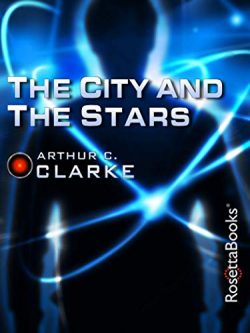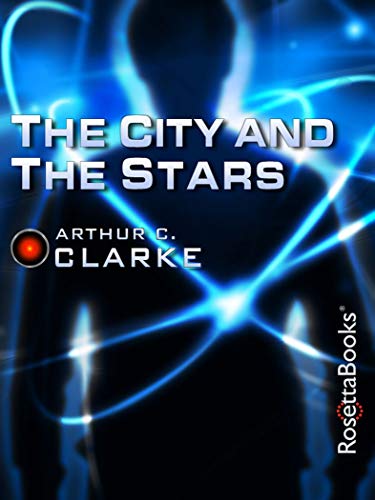
Between science fiction and fantasy the line is often blurry. That line is hard and fast when an SF story is firmly grounded in known science. But when a writer ventures far into the future, speculating about the emergence of technologies that bear no recognizable relationship to what is known today about how the universe is organized, it’s difficult to regard the product as anything other than fantasy. It’s certainly not hard science fiction, even when it comes from the mind of one of the most celebrated authors of hard SF, Arthur C. Clarke (1917-2008). And unlike many of his other books, that’s the case with Clarke’s 1956 classic, The City and the Stars. It’s unusual to come across any fantasy from Arthur C. Clarke.
Fantasy from Arthur C. Clarke set a billion years in the future
The City and the Stars is set a billion years in the future. Humankind—”Man” in the antiquated language of mid-century America—has ventured to the stars, built a galactic empire, and then retreated to Earth. The ten million survivors of the human race are housed in a single city, Diaspar. They are immortal, seemingly content to live century after century pursuing the myriad opportunities for entertainment and recreation that the city affords, their every need taken care of. Yet those simple facts don’t begin to tell the full story.
The City and the Stars by Arthur C. Clarke (1956) 231 pages ★★★★☆
Immortality, at a price
In fact, there are not ten million but hundreds of millions of people in Diaspar. Nearly all of them reside in the Memory Banks alone, only to be reconstituted in bodily form in the Hall of Creation after many thousands of years. Those who grow weary of life return themselves to the Hall of Creation, broken apart into atoms and entered once again into the Memory Banks, only to be reborn many millennia later to maintain Diaspar’s population at a steady level. The citizens of Diaspar have bought immortality at a price, for they have eliminated not just death but birth as well. And it’s all managed with perfect precision by the Main Computer, which is buried deep underground.
A radical new departure for humanity
Nothing changes in Diaspar. The Main Computer’s Eternity Circuits guarantee the permanence of its creations. Yet now a young man named Alvin emerges from the protection of his guardians, threatening to upset the equilibrium. For Alvin is Unique in Diaspar: he emerged twenty years ago, wholly formed, from the Hall of Creation, like everyone else but without any memory of the past lives that are a living reality for all his fellow citizens in the city. Alvin is determined to find a way through the walls of the city to explore what lies outside. And that is the beginning of Alvin’s adventure—and a radical new departure for humanity.
Surprising though it may be to some readers, this fantasy from Arthur C. Clarke could hardly be called science fiction. In more ways than I can count, the story departs from scientific reality. But, above all, Clarke’s tale begs a fundamental question: how long will humanity survive? After all, given the self-destructive behavior of the human race over the past century, many of us find it hard to believe that our species will endure for more than another century, let alone a billion years.
For related reading
I’ve also reviewed Arthur C. Clarke’s masterful Rendezvous With Rama, at Arthur C. Clarke’s believable First Contact novel.
You might also care to look at another classic author’s view of the distant future: Across a Billion Years by Robert Silverberg (A science fiction master imagines a uniquely advanced alien civilization).
For more good reading, check out:
- These novels won both Hugo and Nebula Awards
- The ultimate guide to the all-time best science fiction novels
- 10 top science fiction novels
- The top 10 dystopian novels
- 10 new science fiction authors worth reading now
And you can always find my most popular reviews, and the most recent ones, on the Home Page.


























